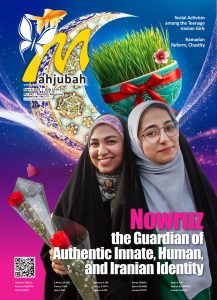When I close my eyes and think of Iran, colors dance before my inner gaze: the turquoise blue dome of the Imam Mosque, the golden reflection of the sun on the ancient ruins of Persepolis, the deep red of Persian carpets. I hear the whisper of the wind carrying the scents of saffron and roses through the narrow streets of the bazaar.
Iran is for me a land of contrasts and mystery, a place where past and present intertwine in a complex dance of tradition and modernity. By writing these notes, I intend to open the door to a world that is often seen through the distorted lens of media and prejudice. Iran is not just a geographical concept or a political entity; it is a living mosaic of cultures, ideas, and dreams. Through this journey, I hope to discover not only Iran but also a new way of looking at the world around us, where differences become bridges and not obstacles.
Imagine being able to touch the walls of time. Beneath your fingertips, the rugged stone of Dariush’s Throne at Persepolis tells a story 2,500 years old. Here, in the heart of ancient Persia, a civilization was born that would leave an indelible mark on the world. The Persian Empire was not just a political power; it was an empire of ideas. From these desert expanses came the philosophies that have shaped human thought, from Zoroastrianism to Islamic mysticism. Poets like Rumi and Hafez spoke of love and wisdom in a language that still resonates in the hearts of people around the world.
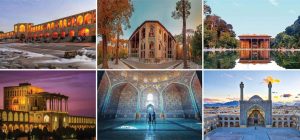
For centuries, Iran has been a bridge between East and West, a meeting point of civilizations. The Silk Road and the Spice Route intersected here, as did ideas and beliefs. Persian art and architecture inspired builders from India to Spain, creating new forms of beauty that transcended cultural boundaries. But Iran’s history is not just a story of glory and achievement. It is also a story of conquests, defeats, and resurgences.
Iran has survived waves of conquerors, including Alexander of Macedon and the Mongols, each time rising from the ashes, like the mythical ‘Simurgh,’ stronger and wiser. This rich historical tapestry makes Iran a unique laboratory of human experience. It teaches us that civilizations do not disappear; they transform, adapt, and continue to live on through the ideas they have created. In this sense, ancient Persia lives on, not just in museums and books, but in the hearts and minds of people.
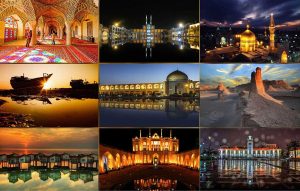
Imagine Omar Khayyam sitting in the shade of a cypress, translating the secrets of the universe into quatrains. His words about the transience of life and the joys of the moment have traveled through the centuries, touching souls from Tehran to Tokyo, and from Belgrade to Buenos Aires. Also, imagine Rumi’s words about divine love, which spin the world in an ecstatic whirlwind. His poetry is not just art; it is a way of life, a philosophy that teaches that love is the core of all that exists.
The architecture and the poems carved on stone defy gravity and time. The Blue Dome of the Isfahan Mosque—the vault of heaven brought down to earth—a place where the material merges with spirituality.
What about carpets?! Every design reflects a dream: the maps of imaginary gardens, windows into worlds that exist only in the imagination of the weaver. When you walk on a Persian carpet, you travel through time and space, through legends and myths. Iranian art is not a static relic of the past; it is a living, pulsating force that is constantly renewing itself. In the works of contemporary Iranian artists, we see how ancient motifs are transformed and how tradition faces the challenges of the modern age—a living, breathing organism that continues to inspire, surprise, and create a symphony of the senses that reminds us that beauty has no boundaries.
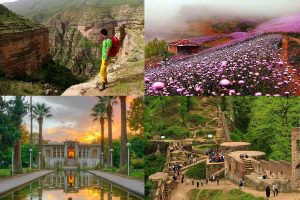
Imagine standing at the crossroads of time, with stretched millennia of history behind you and the rhythm of the 21st century in front of you. This is modern Iran—a country where the past and the future meet in an exciting, sometimes turbulent embrace. Tehran, the capital of this contrast, is a city where minarets of mosques cast shadows on the glass facades of modern buildings. In cafes hidden in quiet streets, here, tradition is not a petrified past but a living entity that is constantly reshaped in dialogue with the present. Now imagine Iran’s youth: more than half of the population is under 30. This generation, born after the Islamic Revolution, carries within them a unique blend of deep respect for tradition and an eager desire for change.
In contemporary Iranian art, we observe a challenge between the old and the new. Contemporary Iranian artists use traditional forms of calligraphy and miniatures to express modern ideas, creating works that are both deeply Iranian and globally relevant. Yet this transition is not without its challenges, and it is precisely because of the existing challenges that the unique creativity and resilience that define the contemporary Iranian spirit are born.
Imagine Iran as a vast cauldron in which elements of the past and the present, tradition and innovation, are melted and mixed. From this cauldron emerges a new alloy—an identity that is both deeply rooted in the rich Persian culture and open to the challenges of the global world. This is Iran today—a country that stands on the threshold of the future but never forgets where it came from.
Well, let’s move on to the fourth and final point of the main part, “Iran as a metaphor for bridging differences”
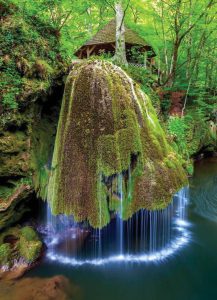 Imagine a world map, not as a political drawing of borders, but as a colorful tapestry of cultures, at the heart of which lies Iran, like a precious stone. Iran is not just a geographical fact – it is a living metaphor for the possibility of connecting seemingly irreconcilable worlds. Situated at the crossroads of civilizations, it has been a meeting point between East and West, North and South for centuries, a bridge connecting the shores of diversity, and inviting to cross the abyss of misunderstanding and fear of the unknown. Iran has always been a place where different cultures have met, mixed, and transformed. Despite political tensions, the Iranian diaspora around the world is building bridges of understanding. Iranian students at Western universities, artists exhibiting in galleries from New York to Tokyo, and writers whose books win the hearts of readers on every continent – are all ambassadors of a culture that refuses to be confined by political borders.
Imagine a world map, not as a political drawing of borders, but as a colorful tapestry of cultures, at the heart of which lies Iran, like a precious stone. Iran is not just a geographical fact – it is a living metaphor for the possibility of connecting seemingly irreconcilable worlds. Situated at the crossroads of civilizations, it has been a meeting point between East and West, North and South for centuries, a bridge connecting the shores of diversity, and inviting to cross the abyss of misunderstanding and fear of the unknown. Iran has always been a place where different cultures have met, mixed, and transformed. Despite political tensions, the Iranian diaspora around the world is building bridges of understanding. Iranian students at Western universities, artists exhibiting in galleries from New York to Tokyo, and writers whose books win the hearts of readers on every continent – are all ambassadors of a culture that refuses to be confined by political borders.
But perhaps the most important lesson Iran offers us is one of complexity and nuance. In a world prone to simplification and polarization, Iran reminds us that reality is never black and white. It teaches us to seek beauty in paradox, wisdom in contradiction, and unity in diversity. Think of Iran as a prism through which we view the world. Iran, in its many manifestations—historical, cultural, contemporary—is not just a country or a nation. It is an idea, a call for dialogue, for understanding, for friendship that transcends borders. In this sense, “Iran from My Viewpoint” is not just a view of one country, but also a view of the world as it could be—a world where diversity is not a threat but an opportunity for growth.
As we close this short but rich walk through Iran—its history, culture, modernity, and symbolic meaning—we cannot help but ask ourselves: what does this country mean to us, here and now? My journey to Iran was not just an exploration of one country. It was a journey through the idea of what it means to be human in a world of difference. Iran teaches us that it is in this diversity—linguistic, cultural, philosophical—that our greatest wealth as a species lies hidden. When we think of friendship without borders, we cannot help but see Iran as an inspiration.
By: Professor Muna Jusufspahić


